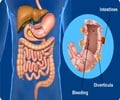One in two adults are obese in Australia and the problem has increased from the past decade due to physical inactivity and unhealthy eating habits.
Highlights
- Obesity is the biggest public health challenge facing the Australian population and calls for implementing a multi-faceted strategy.
- The need for a strategy to combat the problem is because obesity has set in among children, teens as well as adults.
- Not only are food habits getting out of hand, physical inactivity is also on the rise.
Overweight and obesity is a growing problem in Australia and needs to be controlled. Over half of the nation's population, nearly 63.4% was obese in 2014-2015. The problem is getting worse as the numbers were 56.3 in 1995. Obesity is a condition in which a person’s weight is 20% or more above normal weight, or has a Body Mass Index (BMI) of 30 or more while overweight is an increase of 10% from normal body weight. It is a well-known fact that obesity leads to diabetes, hypertension which in turn causes heart disease.
Apart from adults, childhood obesity is also a major issue as a quarter of Australian children and adolescents are overweight or obese.
To combat the endemic, all government, non-government organizations, food industry and the media must join hands, reports the Australian Medical Association (AMA).
The AMA recommends that the initial focus of a national obesity strategy should be on children and adolescents. Interventions should begin with the pregnant mother and the fetus, and must continue through infancy and childhood.
AMA President, Dr Michael Gannon, said, “The AMA strongly recommends that the national strategy include a sugar tax; stronger controls on junk food advertising, especially to children; improved nutritional literacy; healthy work environment; and more and better walking paths and cycling paths as part of smarter urban planning.”
Most of them did not complete the training while 14.8% did nothing at all.
Third and most importantly, when it comes to diet, nearly 49.8% adults, that is, one in two met the Australian Dietary Guidelines for the recommended serves of fruit and only 7% met the guidelines for serves of vegetables.
The choice of cheap convenience food is a main cause to ignore the use of fruits and vegetables in the daily diet . Every month, Aussies make a staggering 51.5 million visits to fast food outlets, and 40% of diners loyal to brands which serve high-fat high salty foods.
“Every initiative – diet, exercise, urban planning, walking paths, cycle paths, transport, work environments, sport and recreation facilities, health literacy – must be supported by comprehensive and effective social marketing and education campaigns,” Dr Gannon said.
How to Tackle Such a Massive Issue?
The AMA recommends that the Federal Government’s national obesity strategy incorporates these key elements:
- More space for physical activity: town planning that creates healthy communities, including safe access to walking and cycle paths, parks, and other recreational spaces.
- Ban the targeted marketing of junk food to children.
- Sugar tax - higher taxes and higher prices for products that are known to significantly contribute to obesity, especially in children.
- Reduce the production, sale, and consumption of energy-dense and nutrient-poor products.
- Subsidies for healthy foods, such as fruits and vegetables, to keep prices low, especially in remotes areas.
- Support for doctors and other health professionals to help patients lose weight.
- Local community-based education and information programs and services.
- Greater and more sustained investment in research, monitoring, and evidence collection to determine which and individual and population measures are working.
Source-Medindia















